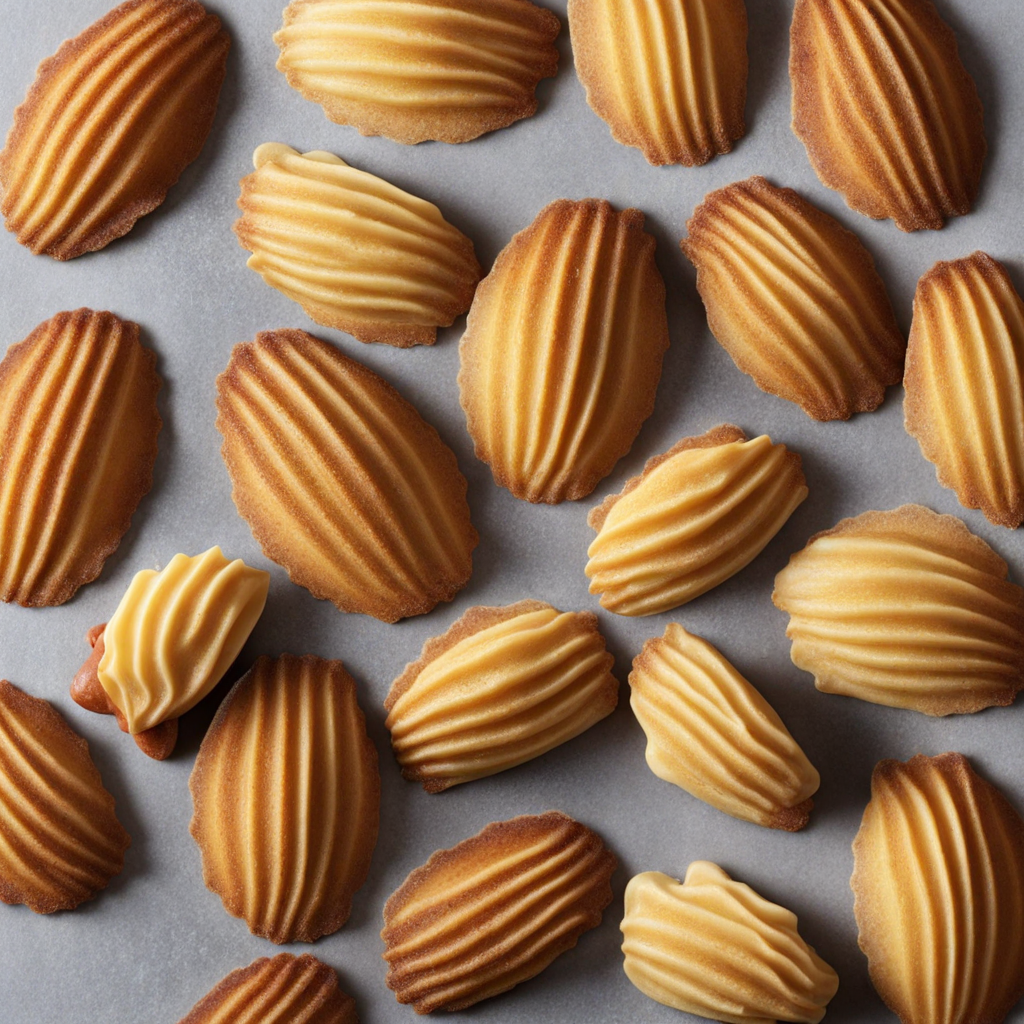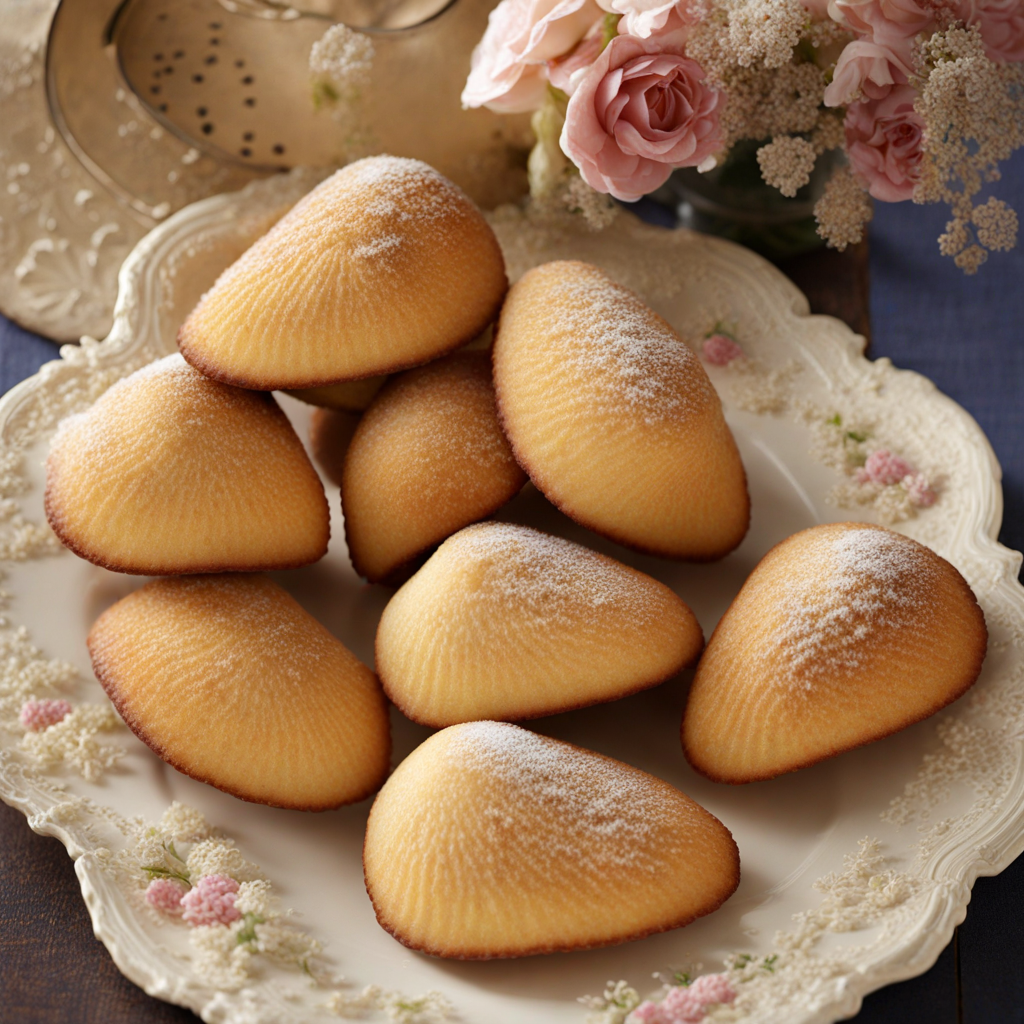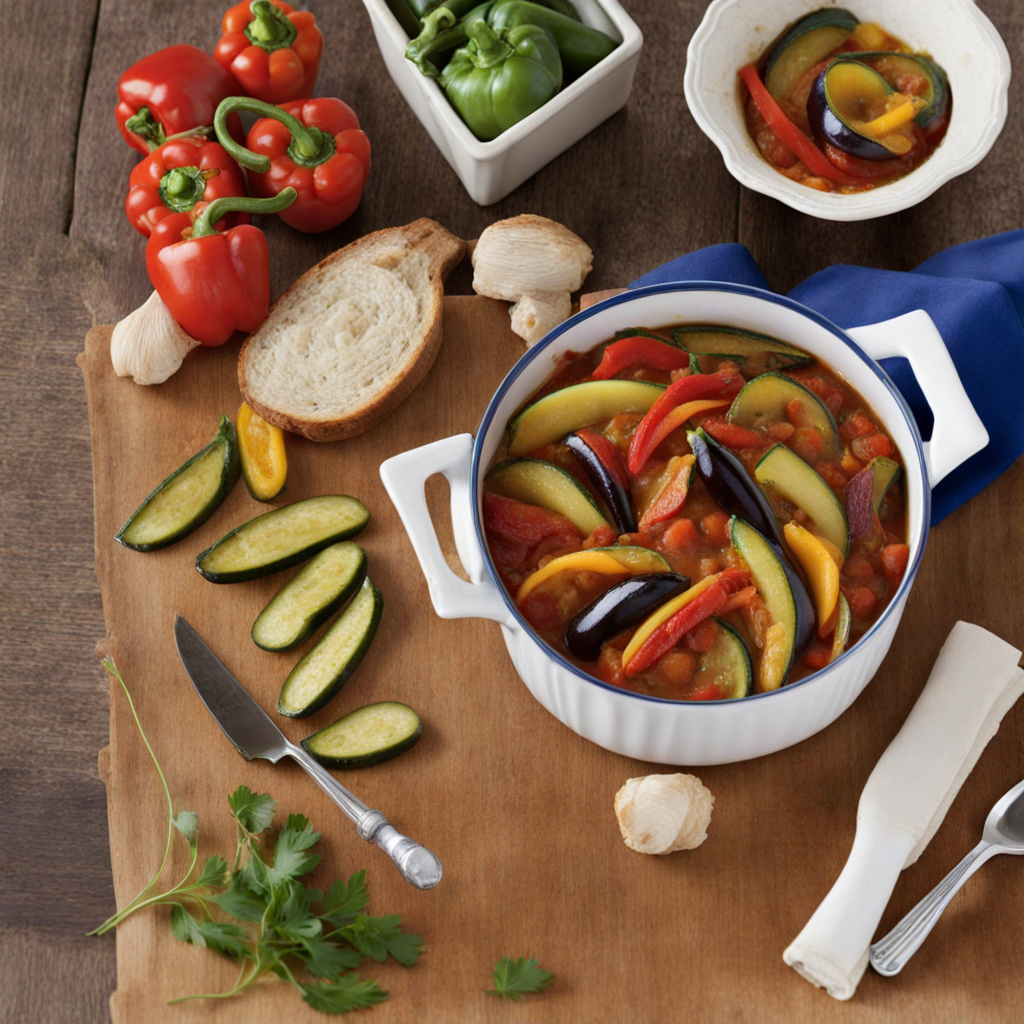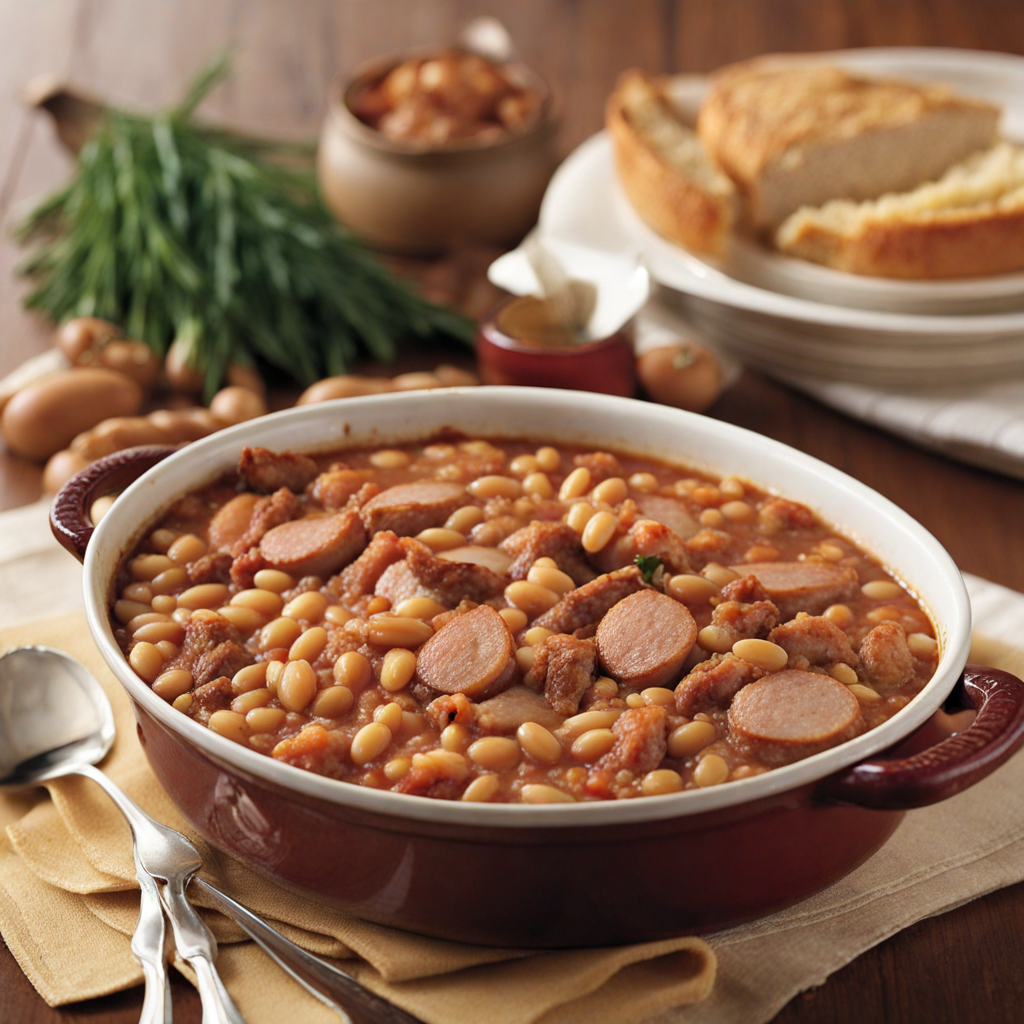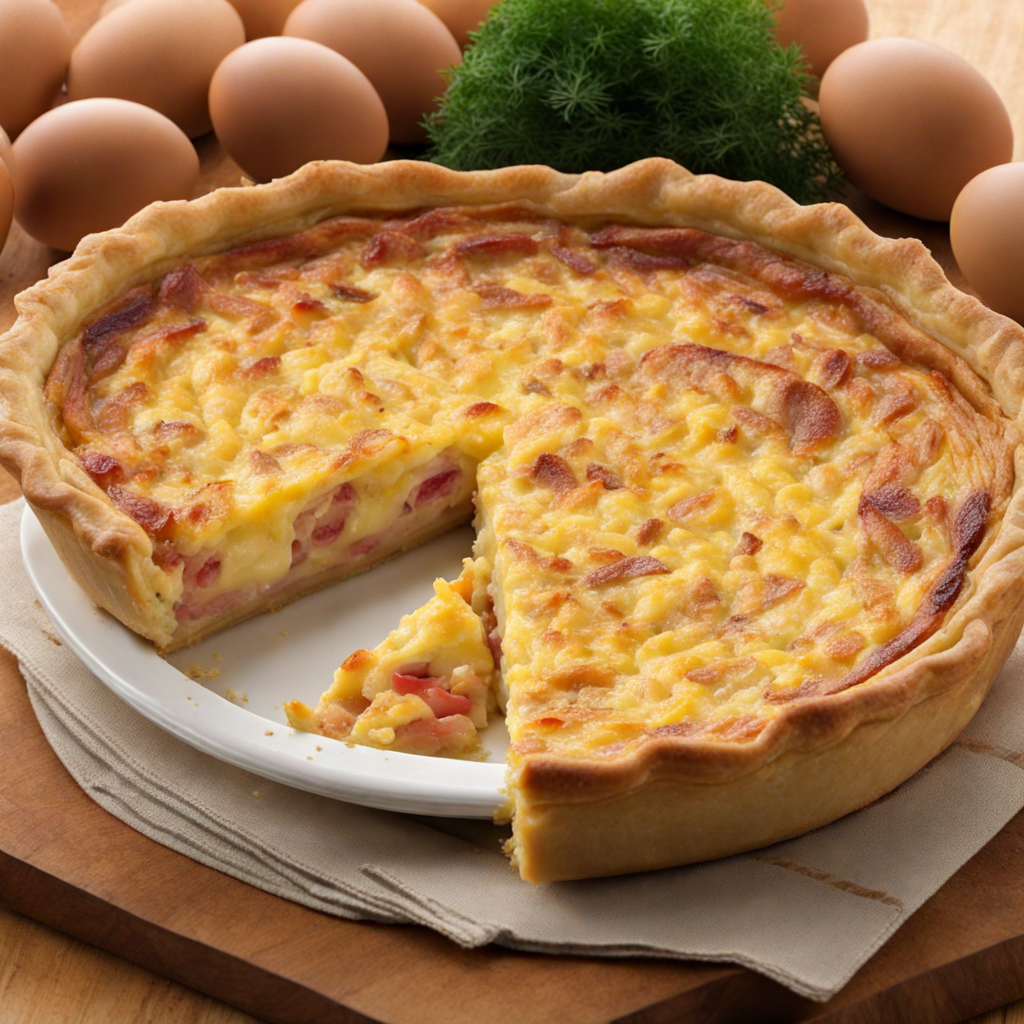Madeleine
Madeleines are delightful little sponge cakes originating from the region of Lorraine in France, known for their unique shell-like shape that is achieved by baking the batter in special molds. These petite cakes are traditionally made with simple ingredients such as eggs, sugar, flour, and butter, which come together to create a light and airy texture. The classic Madeleine is often flavored with lemon zest or vanilla, providing a fragrant and refreshing taste that makes them perfect for pairing with tea or coffee during afternoon breaks. One of the most fascinating aspects of Madeleines is their versatility; while the classic version is beloved, bakers often experiment with various flavors and additions. Some popular variations include chocolate-dipped Madeleines or those infused with almond extract. These adaptations can introduce a rich, nutty flavor or a decadent sweetness that complements the cake's soft crumb. Additionally, they can be enhanced with fruits or spices, allowing for endless creativity in the kitchen. What truly sets Madeleines apart is their nostalgic quality, often evoking memories of childhood and home. They have a delicate crust that gives way to a moist, pillowy interior, making each bite a little piece of heaven. Whether enjoyed fresh from the oven or savored days later, Madeleines remain a cherished treat in French culture, embodying the art of simple yet sophisticated baking. Their charm lies not only in their taste but also in the comforting experience they provide, inviting everyone to indulge in the sweet pleasures of life.
How It Became This Dish
The Enigmatic Madeleine: A Journey Through History #### Origins The madeleine, a small sponge cake from France, is often associated with the region of Lorraine, although its exact origins are shrouded in mystery. The earliest recorded mention of madeleines dates back to the 18th century. According to popular legend, the madeleine was named after a young girl named Madeleine Paulmier, who served the cake to the Duke of Lorraine, Stanislas Leszczynski, in the 1750s. The duke, who was a Polish king in exile, was enchanted by the delightful taste of these small cakes, and thus, the madeleine became linked to his court and the region of Lorraine. However, there are alternative theories regarding its origin. Some suggest that the madeleine has roots in the medieval “pound cake,” derived from the use of equal weights of flour, sugar, butter, and eggs. Others believe that the madeleine’s shape and concept were influenced by the scallop shell, a symbol of pilgrimage and a traditional motif in French baking. This connection reinforces the idea that the madeleine is not merely a dessert but also a representation of cultural and religious significance. #### Cultural Significance The madeleine transcends its status as a mere pastry; it has become a symbol of French culinary art and culture. Its unique shape, typically resembling a shell, is evocative of both nature and spirituality, hinting at the historical connections to pilgrimage. This small cake has also found its way into literature, most famously in Marcel Proust's "In Search of Lost Time" (also known as "Remembrance of Things Past"). In one of the most iconic scenes, the narrator dips a madeleine into tea, triggering a flood of memories from his childhood. This moment emphasizes the madeleine's ability to evoke nostalgia and the profound connections between food and memory. Proust's description cemented the madeleine's place not just in French gastronomy, but also in the broader cultural landscape. In addition to its literary significance, the madeleine has become a staple in French tea culture, often enjoyed with a cup of tea or coffee. It is commonly served during afternoon tea or as a light dessert. The madeleine's versatility allows it to be paired with a variety of flavors, from citrus to chocolate, and it can be enjoyed on any occasion, whether it be a formal gathering or a casual afternoon snack. #### Development Over Time Over the centuries, the madeleine has undergone various transformations and adaptations that reflect changes in culinary practices, tastes, and cultural influences. The traditional madeleine recipe consists of a simple batter made with eggs, sugar, flour, and butter, often flavored with lemon zest or almond extract. However, modern interpretations have introduced a wide array of flavors and fillings, including chocolate, lavender, and matcha, showcasing the madeleine's adaptability. During the 19th century, as French culinary arts flourished, the madeleine began to gain popularity beyond the borders of Lorraine. The Industrial Revolution brought about changes in baking technology and techniques, allowing for mass production of the madeleine. This accessibility contributed to its rise as a beloved treat throughout France and eventually the world. In the 20th century, the madeleine experienced a resurgence in artisanal baking. Chefs and bakers began to explore the madeleine's potential, experimenting with different ingredients and methods, leading to an explosion of creativity. The rise of gourmet food culture brought the madeleine back into the limelight, as chefs began to showcase their skills through this seemingly simple yet sophisticated dessert. The madeleine's place in culinary history was further solidified by the establishment of patisseries, where skilled pastry chefs honed their craft and created exquisite versions of the classic recipe. Today, madeleines can be found in various forms across France, from traditional plain madeleines to elaborate versions filled with fruit compote or chocolate ganache. #### Global Influence As French cuisine gained international acclaim, the madeleine traveled far beyond its homeland. It became a symbol of French culture and elegance, often featured in French-themed cafes and restaurants worldwide. The madeleine's charm is its simplicity, allowing it to be embraced by various cultures while maintaining its French identity. In the United States, the madeleine found a new audience in the late 20th century, particularly during the rise of French-inspired bistros and patisseries. The influence of food blogs and social media in the 21st century has led to an explosion of interest in baking, with home bakers around the world attempting to recreate the classic madeleine. This renewed enthusiasm has sparked a resurgence of traditional recipes and innovative twists, resulting in a global appreciation for this delightful treat. #### Conclusion The madeleine is more than just a cake; it is a culinary icon that encapsulates the essence of French culture and history. From its mysterious origins in Lorraine to its literary significance in Proust's work, the madeleine represents a connection to memory, nostalgia, and the simple pleasures of life. Its evolution over time reflects changes in baking practices and cultural influences, allowing it to adapt and thrive in a modern context. As global palates continue to embrace diverse flavors and culinary traditions, the madeleine stands as a testament to the timeless appeal of French cuisine, inviting all to savor its rich history and delightful taste. Whether enjoyed in a quaint café in Paris or a cozy kitchen at home, the madeleine remains a beloved symbol of joy, nostalgia, and culinary artistry.
You may like
Discover local flavors from France


